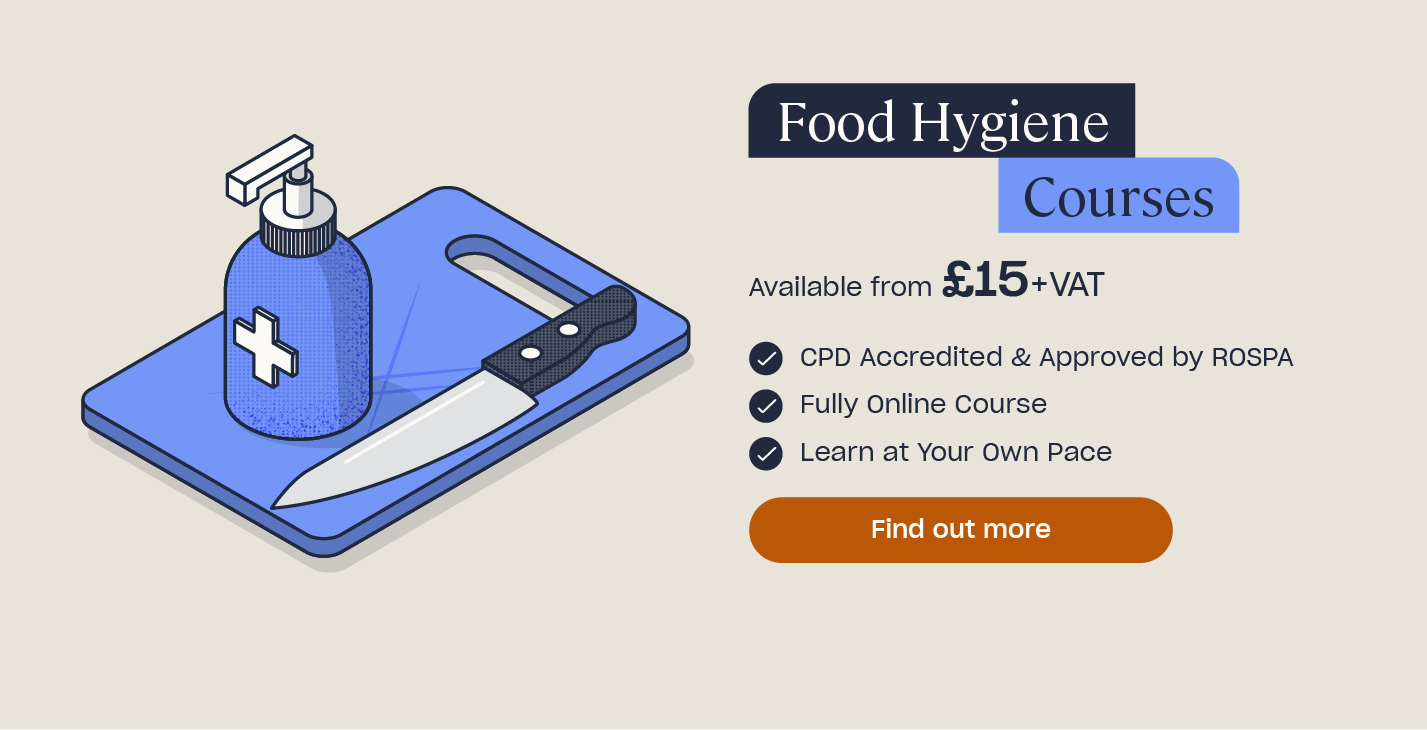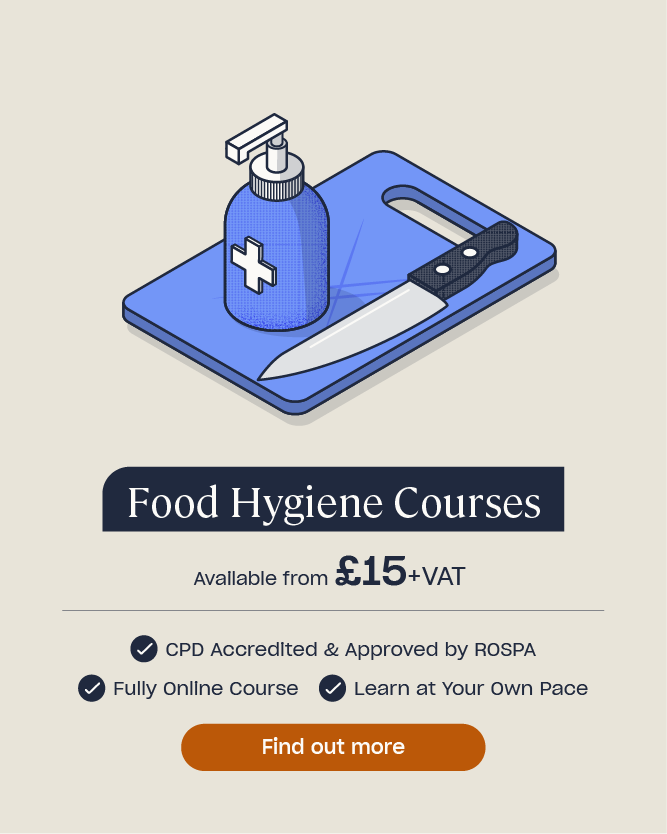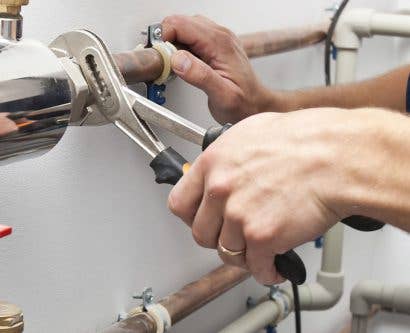Kitchen Risk Assessment Template for Catering
Health and safety are an important aspect of any workplace. Working in a kitchen environment has its own unique health and safety risks, and each kitchen workplace should undergo a kitchen risk assessment to determine what reasonable steps you can take to keep your staff, and your customers, safe.
Need Risk Assessment Training?
Our Risk Assessment Training Course is designed to help businesses comply with the Management of Health and Safety Regulations 1999 by explaining how to complete a suitable and sufficient workplace risk assessment.
What is the Difference Between a Risk Assessment and a HACCP System?
There is a legal duty to both complete a risk assessment, and implement a HACCP system in your commercial kitchen.
The Health and Safety at Work, etc. Act 1974 is the main legislation for the welfare of employees and others affected by work. Every employer has a legal duty to manage health and safety risks to protect employees and members of the public from harm, as far as is reasonably practicable. Under this law the risk assessment must be reviewed at least every year, and, if there are 5 of more employees, you must keep a written record.
HACCP stands for Hazard Analysis and Critical Control Points and is an internationally recognised food safety management system that helps businesses to identify, evaluate and control the hazards that pose a significant risk to food safety. It is governed by article 5 of Regulation (EC) No 852/2004.

Both your risk assessment and your HACCP system are required by law and there is significant overlap between them. This article will focus on the health and safety of employees in the kitchen workplace. However, there will be instances where health and safety risks could threaten food safety, in which case you would refer to your HACCP system.
Should you want to learn more about food safety, take a look at our article on the differences between food hygiene and food safety.
Does My Kitchen Need a Risk Assessment?
Every commercial kitchen will need to carry out a risk assessment. This will help you identify what risks your employees may face in the workplace, and what you can do to manage them and keep everyone safe.
All kitchens are unique so you will need to consider different risks for different kitchen environments. For example, a large, busy restaurant kitchen may have more hot plates, and so there would be increased risk of heat stress and burns than in a kitchen with fewer hot plates. Similarly, if your kitchen has an uneven floor or is on different levels, it may create more slip and trip hazards.
To help you determine risks in your kitchen, we have provided a step by step guide in this article, along with an example kitchen risk assessment and a free blank kitchen risk assessment template, which you can download and fill in for your own kitchen workplace.
Who Should Complete the Kitchen Risk Assessment?
The employer is responsible for ensuring a kitchen risk assessment is completed. This can be done by themselves, or by another competent person. A competent person could be anyone in the business who has sufficient training, skills, experience and knowledge to carry out the risk assessment process safely. For example, this could be a kitchen manager, head chef, general manager or business owner.
What Are the Steps of a Kitchen Risk Assessment?
Regardless of whether the risk assessment is for a restaurant kitchen, school cafeteria, or other catering business, all risk assessments should follow the same steps. When you write your own risk assessment, follow the steps below but apply it to the risks in your own workplace.
Step One: Identifying hazards
When you start thinking about your kitchen risk assessment, firstly take a walk around the area and identify any potential hazards and risks. What activities, processes or substances do you use that could injure your employees, or cause harm to health? When you are familiar with your workspace it can be easy to overlook things. Ask your staff for their input and learn from their experiences, listen to their concerns and opinions. You could check the accident book to see if there have been previous accidents which might happen again. Remember to also think about long term hazards to health, such as heat stress, manual handling related disorders, and causes of work-related mental ill health.
Ask yourself questions as you go:
- Does the floor near the dishwash area get wet? This might be a slip hazard.
- Are the walk-in fridges and freezers tidy, and is there a safety system in case someone was locked in?
- Are deliveries put away promptly? Can this be done easily, with no obstructions or trip hazards?
- Is the shelving adequate in the store areas? How do staff get items from the top shelf? If they use a stepladder, have they been trained in how to use this?
Step Two: Decide who might be harmed and how
For each hazard you identify, you need to be clear about who might be harmed – this will help you identify ways to control the risk. You don’t need to name names, but think about specific job roles. For example, kitchen porters have prolonged contact with water and detergents which could cause skin irritations.
Your risk assessment must take into account any groups of vulnerable people. For example, if you employ young people in your kitchen, ensure the work they do is not beyond their capabilities, such as lifting heavy pots, pans and equipment repeatedly.
Also think about people who use specific equipment, for example, your ice machine may develop a leak and not freeze ice properly. This could cause a hazard if there was spilled water on the floor causing passers-by to slip. It could also be a food safety issue – if the ice is melting it could cause bacteria in the machine to multiply – this could put customers with ice in their drinks at risk of bacterial contamination.

Step Three: Evaluate the risks
Now you understand what the hazards are, and how people might be harmed in the kitchen, you need to think about how likely it is that harm will occur, and what steps you can take to reduce that risk. You are not expected to remove all risk from your kitchen, but you do have to manage, and reduce risk where you can.
Think about the following:
- What are you already doing to control risk?
- Is there anything else that you need to do?
You will likely find that you already have processes in place to reduce the risk. For example, fans and extractors work to control air temperature, this will help prevent staff from over-heating when working. In this situation, is there anything more you can do to help staff who are working in extreme temperature? Think about providing them with iced water and encouraging rest breaks in cooler areas of the kitchen where possible.
Look at each of your hazards and where your existing controls are not good enough, note down what more you can do to keep your staff safe in the kitchen. If you are looking to understand more about what is involved in a successful HACCP food safety management system, take a look at our Level 3 HACCP Training for Catering & Retail.
Step Four: Record the findings
At this stage in your risk assessment, you should be recording your key findings. The record should include:
- The hazards that may cause harm
- How they may harm people
- What you are doing to control the risks
If you employ less than 5 people, by law, you do not have to write down the findings of your risk assessment. However, it is good practice to do so, and it will be useful if anything changes in your workplace and when you come to review your risk assessment.
Your risk assessment must be easy to read, and the controls in place to reduce risk must be easy to understand, so keep it simple.
If you have identified improvements that can be made in the short term until more reliable controls can be put in place, make sure you write it all down.
Once you are happy with your kitchen safety risk assessment, put it up somewhere visible. Discuss the findings with your staff and make sure everyone understands what they need to do to be safe at work.

Step Five: Review and update
If you do not keep your risk assessment up to date, it will fail to keep your staff safe. You must therefore review your risk assessment regularly.
You should do this anytime something changes in the kitchen, and this will usually be fairly often. It could be that you get a new supplier for chemicals, in which case there may be alterations to how you store and use them. You may receive a new piece of equipment in the kitchen which changes the way you operate – you will need to consider any new risks this brings. You should also refer to accident records, is there anything you could learn from?
If there aren’t any significant changes in your workplace, you should still review the risk assessment at least every year. This will ensure it remains up to date with your working environment, and it will help you ensure your staff have all received training in how to work safely.
Free Kitchen Risk Assessment Template for Catering
We have created an example kitchen risk assessment which you can download and use as a guide for how to fill in your own kitchen risk assessment. Consider the examples, some may be applicable to your own workplace.
When you are ready to complete your own commercial kitchen risk assessment, download our free blank template below.
You can fill in this blank template on your computer, or tablet, if you like. Once it is complete remember to print a copy so that you can share it with your employees. Remember to walk around your workplace and consider the risks your staff face, and what you can do to keep them safe, healthy and happy at work.
What To Read Next:
- Managing Mental Health & Wellbeing In Hospitality
- How to Improve Your Food Hygiene Rating
- The Importance of Stocktaking in Hospitality: Guide for Managers
- 4 Common Kitchen Hazards and How to Avoid Them
- A Short Guide to Ventilation in Commercial Kitchens
- Online Food Hygiene Training












